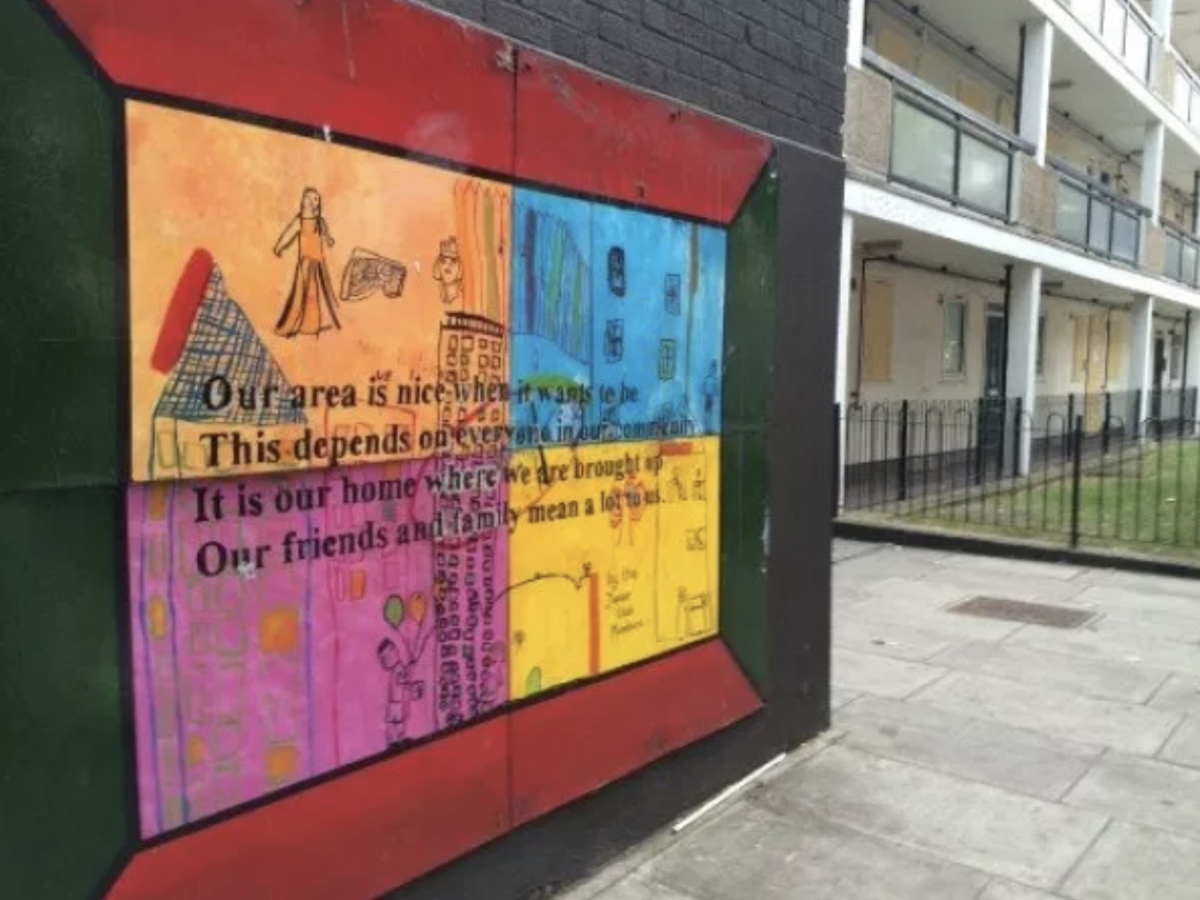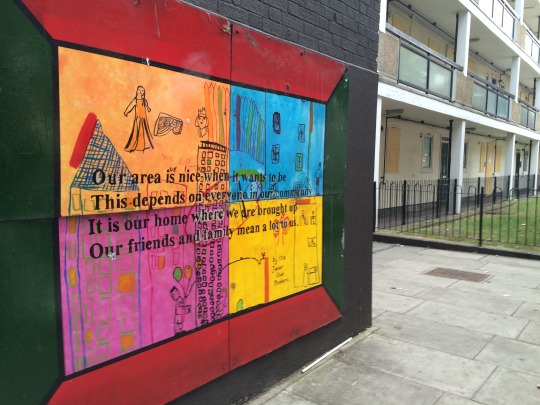
A mural by local children outside condemned social housing block Linton House in Mile End pic: @balfronsocial
“Our area is nice when it wants to be
This depends on everyone in our community
It is our home where we are brought up
Our friends and family mean a lot to us”
-by The Junior Club Members
Were these words and this mural created in more optimistic days? Days when a vote to transfer the management of your council flat from the London Borough of Tower Hamlets was based upon promises made by Poplar Harca of new kitchens, bathrooms and windows?
Welcome to the new reality of social housing in Poplar, Bow and Mile End; a reality now outsourced to “Registered Social Landlord” Poplar Harca; a reality in which community art murals by Junior Club members are ripped down (along with their homes) and replaced with “community art” that isn’t really made by members of the community, but by those drafted in and curated by Poplar Harca’s “Head of Creativity and Innovation”, curated into his own bland view of what community art is: art that “placeshapes” community, artwash for the mass destruction of social housing and the dismantlement and social cleansing of our communities.
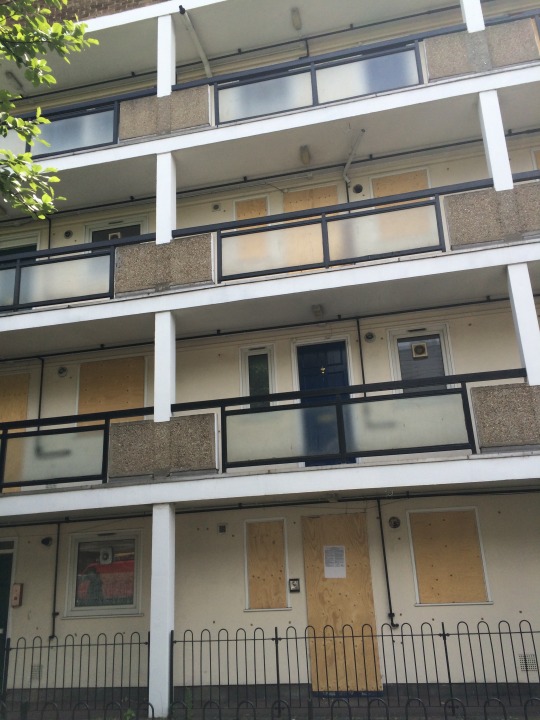
Linton House in Mile End. Awaiting demolition. pic: @balfronsocial
The same community that not so long ago was deemed worthy of creating a mural that celebrated being brought up in a community; that recognised the importance of being surrounded by a network of family and friends.
It continues to mean something to us. It still depends on everyone in the community being nice. Its just that the ones who aren’t being nice anymore aren’t hanging out on street corners scaring the elderly, but are hanging out in their corporate headquarters, doing deals with bankers at HSBC, eager to get their hands on the tax-payer funded capital assets that are (or were) our homes.
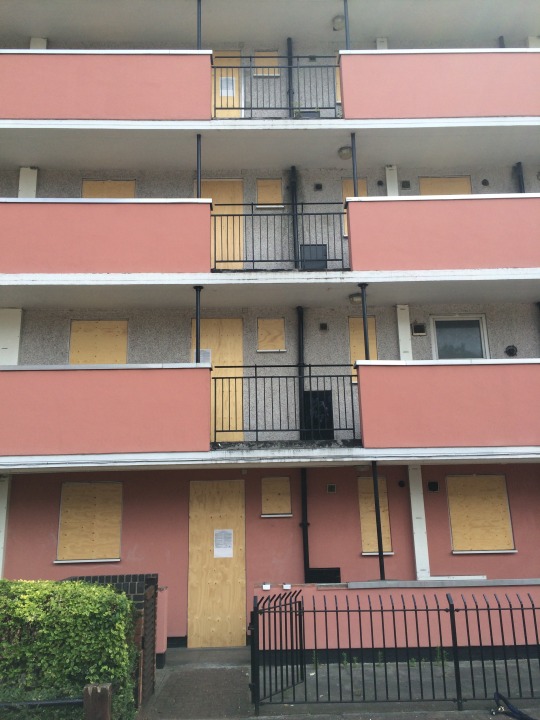
Printon House in Mile End. Social Housing by Poplar Harca: Decanted, Demolished, Rebuilt and Sold pic: @balfronsocial
So, what about the community on the Burdett Estate in Bow where that mural sits? For Printon House and Linton House the wrecking ball is imminent. An established pattern that has already seen most of the Poplar Harca-managed Leopold Estate demolished, with the remaining blocks (and their residents) still anxiously awaiting their fate. Their sin was simply not having a great enough density in their housing, and that they are social housing tenants, who have a level of housing security that those in the private rented sector could only dream of, and rents that aren’t “affordable” but are actually affordable. Just who is it that can afford to pay the £350 per week for a 1-bed flat in these re-developments?

Demolition Notice nailed to a “door” in Printon House pic: @balfronsocial
But surely Poplar Harca are a registered social landlord? Surely they wouldn’t act like a private property developer ruthlessly dismantling communities to build luxury flats for the financial service employees at nearby Canary Wharf? Would they?
Why don’t we take a look at some numbers? These demolition notices recently appeared on the doors in Linton and Printon House, although they are dated 4th November 2013. Their recent appearance could surely not in any way appear intimidating to the remaining residents, as they discover demolition notices stapled to every door in the block. They do however reveal replacement plans for what will materialise to replace the 78 socially rented flats that currently occupy this space.
And that is 11% social housing, with the rest available for sale.

Initial Demolition Notice for Linton and Printon House pic: @balfronsocial
Yes. 11%.
Does this really sound like a registered social landlord with its interests representing the community? Or does this sound like an exploitative property developer ripping apart the carcass of social housing to divide up the spoils?
To break down the figures further: Printon and Linton currently contain 78 socially rented flats. They are to be replaced with 12 flats for social rent, 12 flats for shared ownership and 85 flats for private sale. These numbers are a scandal and a disgrace.
Yes, Poplar Harca are also planning to provide other facilities such as a mosque, a primary school and a ‘cultural’ facility, but none of these additional facilities are the responsibility of a registered social landlord. Building schools etc. are the responsibility of the council; the same council who gave away our social housing to an organisation that has ripped through our community socially cleansing it as they go.
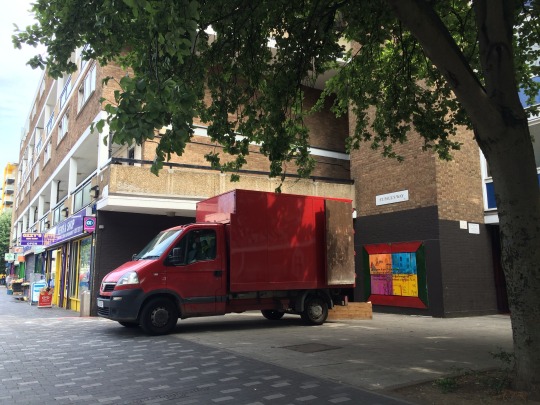
A resident of Linton House has their possessions loaded into a van. pic: @Balfronsocial
11% social housing retention is quite simply a land grab.
We reiterate our calls for retention of a minimum of 50% social housing in all re-developments of social housing blocks and estates.
Balfron Social Club
Poplar
6th July 2015


